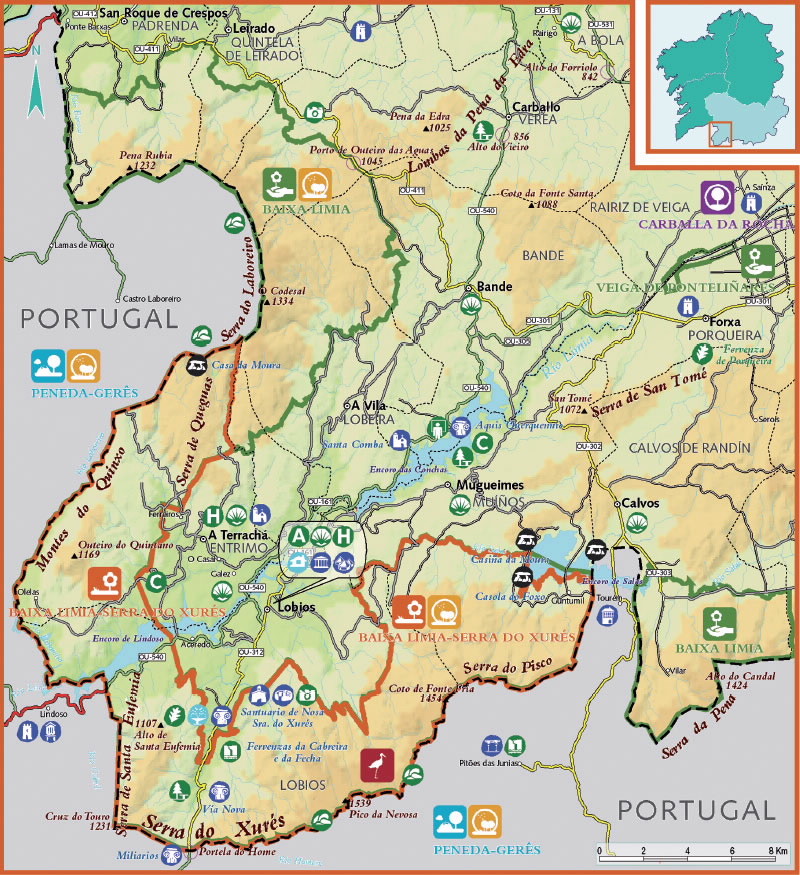mailto:?subject=Content from Tourism of Galicia: GERÊS - XURÉS&body=I recommend you read the information GERÊS - XURÉS extracted from the Tourism of Galicia site on page https://www.turismo.gal/recurso/-/detalle/265347351/xures-geres?langId=en_US
GERÊS - XURÉS

Datos do recursos turístico
Location
Bande | Calvos de Randín | Entrimo | Lobeira | Lobios | Muíños
Description
The mountain range, with its granite colours, stands out against the heavenly blue of the horizon where the borders of Galicia and Portugal meet. Around this range, with its peaks which have been eroded over the centuries, lies an immense forest, Atlantic in its humidity, Mediterranean in temperature and semi-alpine in altitude. It is one of the greatest cross-border reserves in the EU. It has recently been recognized as a Biosphere Reserve by the UNESCO “for the variety of its forests and peat bogs ecosystems, as well as for its many endemic species under the joint influence of an oceanic and Mediterranean climate”.
Access to the Albergaría, do Cabril, do Beredo and Ramiscal thickets is limited in the Portuguese Natural Park. They are listed as some of the best peninsular forests, as is the forest of A Barxa, in the Galician Natural Park.
Access
Situation
Area
Services
Food: Yes.
Without missing
Information and facilities
Map




